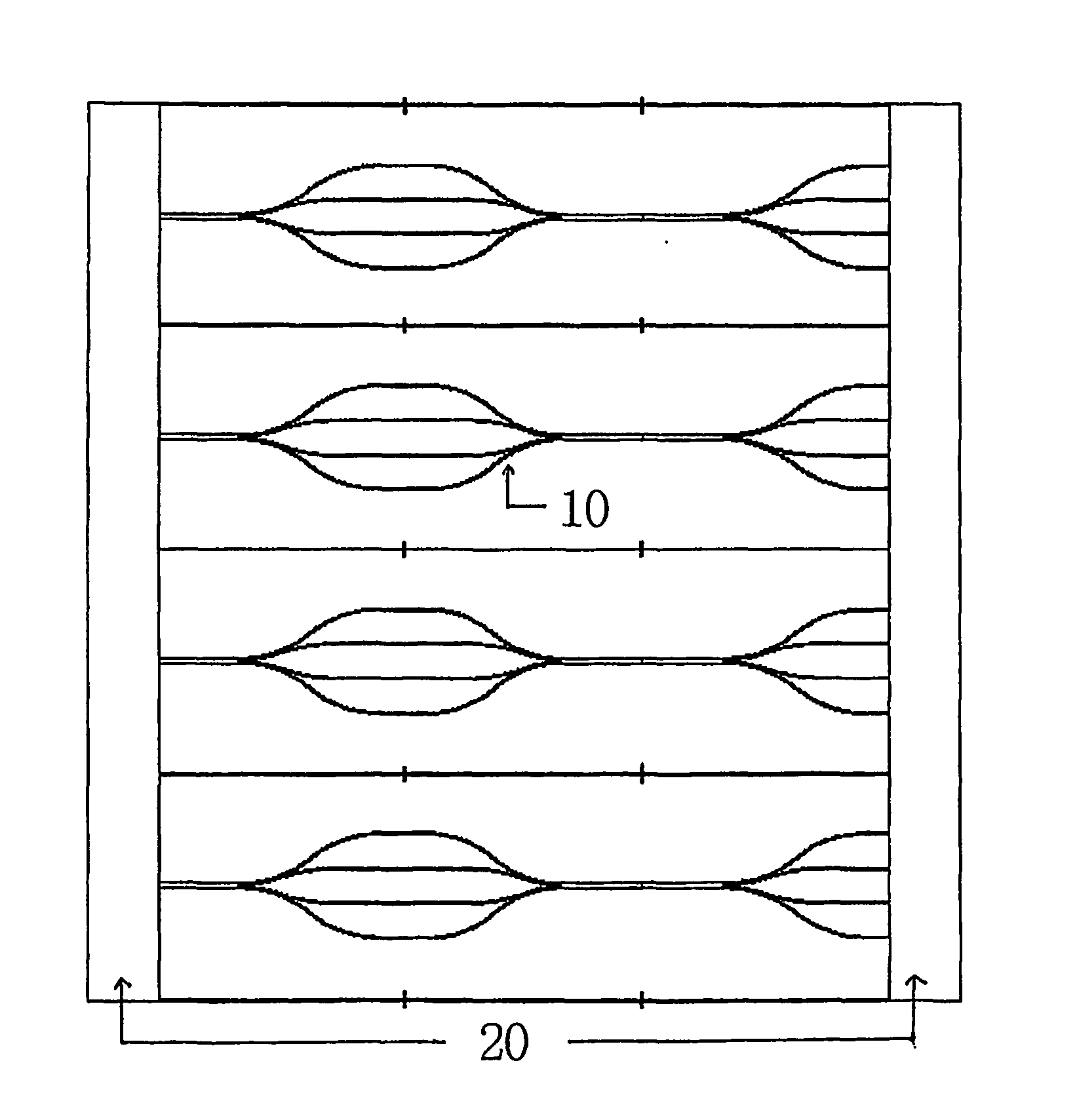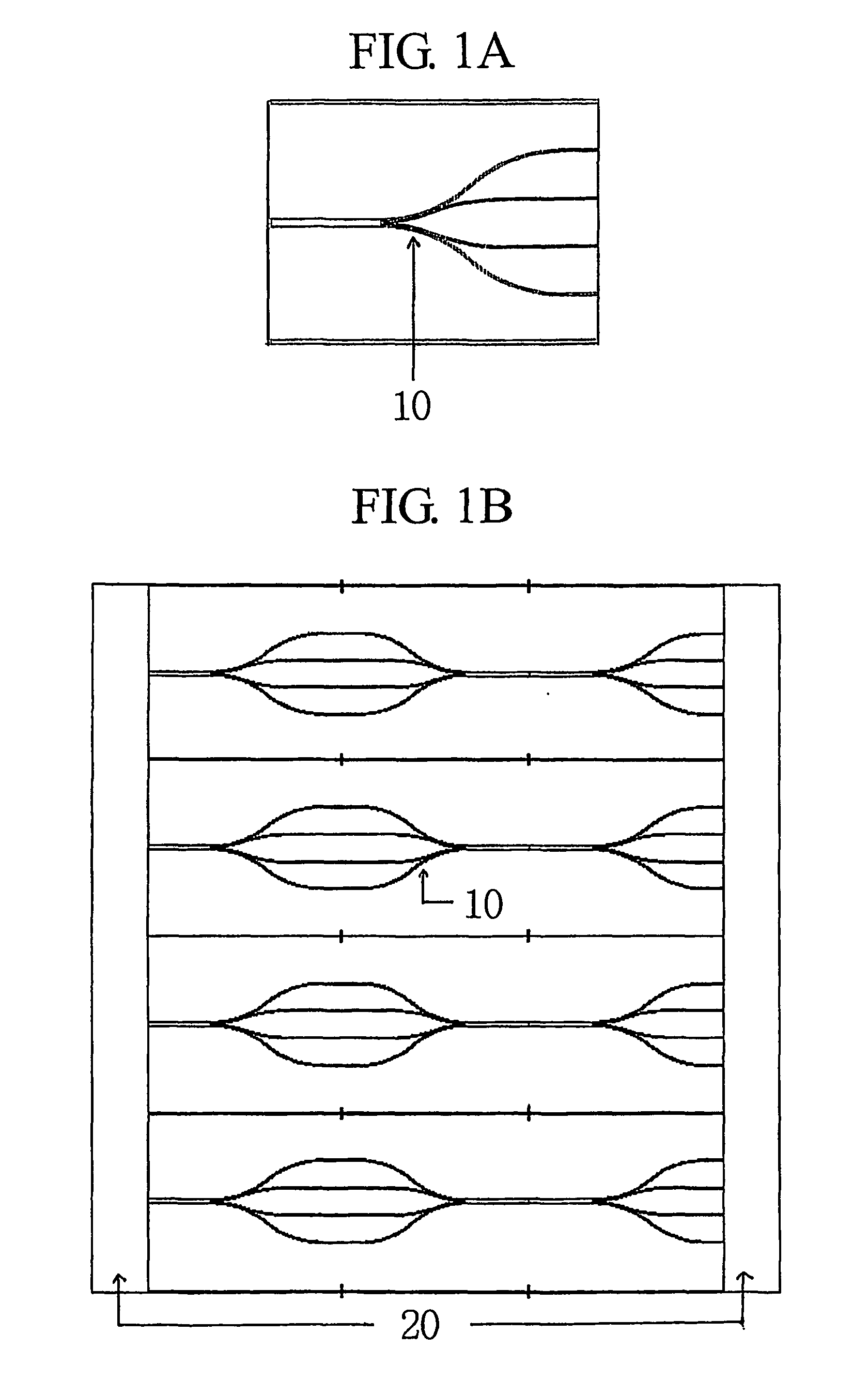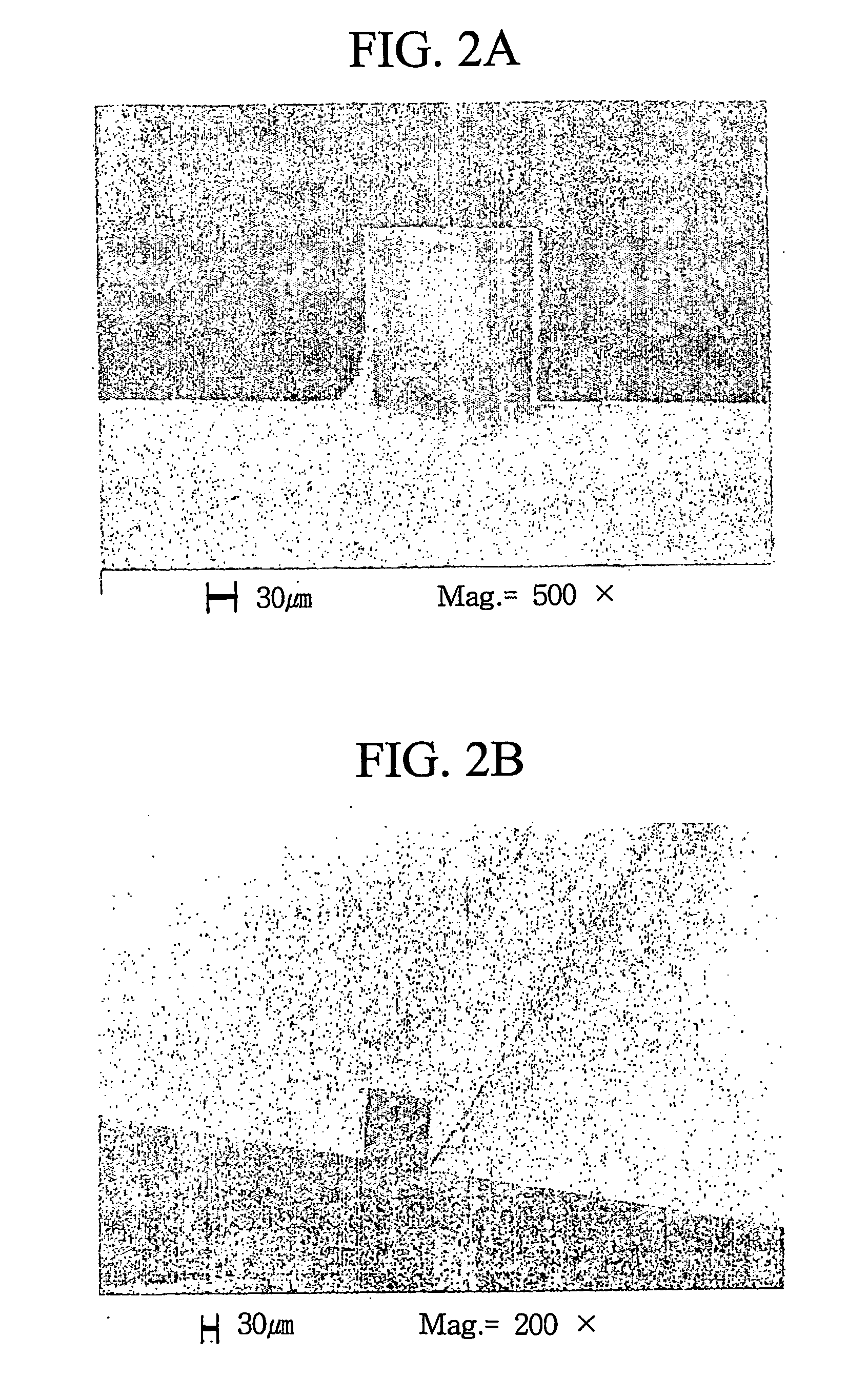Fabrication of polymer waveguide using a mold
- Summary
- Abstract
- Description
- Claims
- Application Information
AI Technical Summary
Benefits of technology
Problems solved by technology
Method used
Image
Examples
example 1
Design of an Assembly for a Mold
[0025] A waveguide pattern unit (10) was designed in the form of a cascade-type 1×4 multi-mode splitter unit having a width×length of 65 mm×70 mm, wherein one major channel (400 μm×200 μm (width×depth)) splits into four branch channels (200 μm×200 μm (width×depth)) as shown in FIG. 1A. Twelve of such units were arranged in a four row×three column configuration together with two rectangular band parts (20) having a width×length of 5 mm×5 mm and a depth of 200 μm such that the channels of the units in each row were interconnected with each other and also to the two bands, as shown in FIG. 1B, to obtain an assembly for a mold.
Preparation of a Mold
example 2
Preparation of a Rubber Mold—1
[0026] A photomask was prepared using the assembly obtained in Example 1. An SU-8 photoresist was coated on a silicon wafer, dried and light-exposed using a mask-aligner and the prepared photomask, and treated with a developer, to prepare an embossing photoresist master. An aluminum tape wall was installed on the circumference of the master. A polydimethylsiloxane rubber was poured thereto, kept at room temperature to remove bubbles therefrom, and cured at 50° C. for 3 hrs, to obtain a rubber mold having a recessed shape.
example 3
Preparation of a Rubber Mold—2
[0027] A photomask was prepared using the assembly obtained in Example 1. The photomask was placed on a 5 mm thick nickel metal plate and subject to LIGA, to prepare an embossing master. For enhancing the surface roughness, the master was nickel plated and polished. An aluminum tape wall was installed on the circumference of the master. A polydimethylsiloxane rubber was poured thereto, kept at room temperature to remove bubbles therefrom, and cured at 50° C. for 3 hrs, to obtain a rubber mold having a recessed shape.
PUM
 Login to View More
Login to View More Abstract
Description
Claims
Application Information
 Login to View More
Login to View More - R&D
- Intellectual Property
- Life Sciences
- Materials
- Tech Scout
- Unparalleled Data Quality
- Higher Quality Content
- 60% Fewer Hallucinations
Browse by: Latest US Patents, China's latest patents, Technical Efficacy Thesaurus, Application Domain, Technology Topic, Popular Technical Reports.
© 2025 PatSnap. All rights reserved.Legal|Privacy policy|Modern Slavery Act Transparency Statement|Sitemap|About US| Contact US: help@patsnap.com



